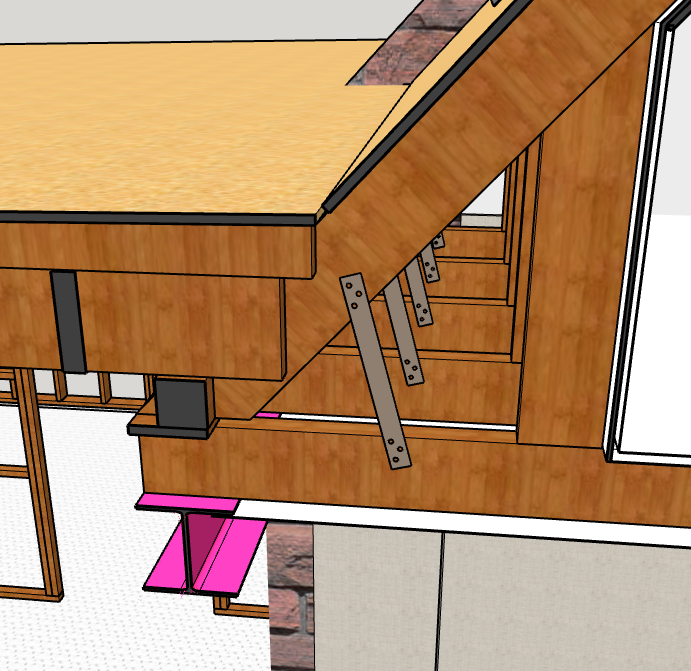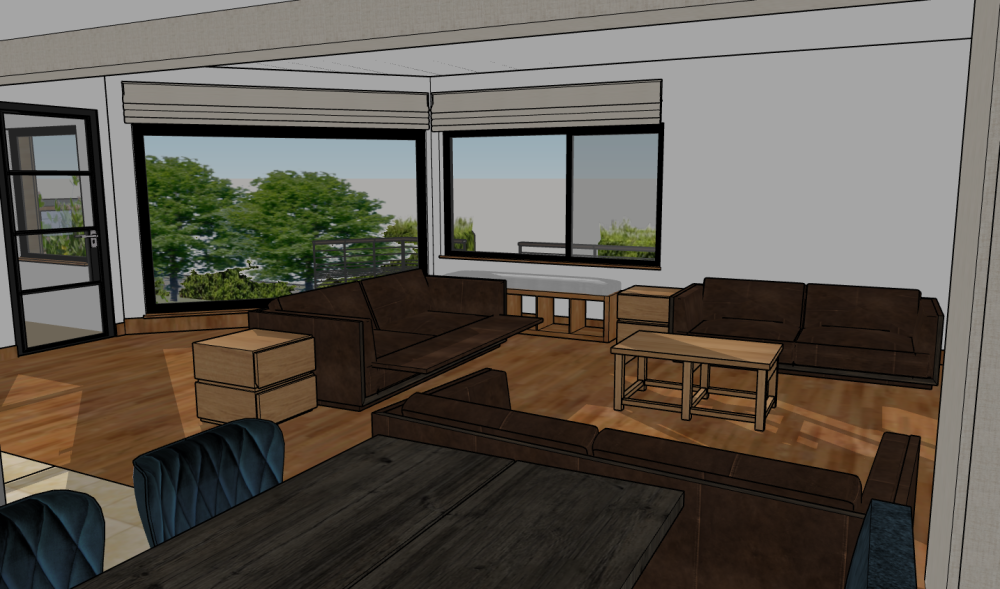-
Posts
49 -
Joined
-
Last visited
Personal Information
-
Location
North East Scotland
Recent Profile Visitors
The recent visitors block is disabled and is not being shown to other users.
nwnw's Achievements

Member (3/5)
4
Reputation
-
So 10ltr/s yearly average is too high. What's your best guess?
-
That's always the tricky bit isn't it. Chats, word of mouth, etc, but still a bit of a minefield. No doubt I'll have a good chat with the SE first so I kind of know what I'm talking about!
-
In case folks did not see it in my other thread...my SE also suggested moving the beam to under the existing joists. So it now looks like this... Not great as there will be a concealed beam in the ceiling space (doesn't actually look that bad). It does however make the build much easier, especially as the old timbers are likely at different lengths.
-
Interesting. The SE will detail the underpinning, but they were very much deferring to the contractor for the installation - and recommending I get someone that really knows what they are doing. Foundations are shown in the attached. I'll add some fancy x-sections at some point. I still need a good Sketchup plugin for that. Detail01-Wall - Rev3.pdf
-
@Crofter, did you look at some of the drawings I attached earlier? I use Sketchup and Sketchup Layout. You basically create a scene in Sketchup then import the scene into a layout view. The scenes can have any sort of x-section and view style. Any changes you do in Sketchup get reflected in the Layout view. You can add dimensions, notes, annotations - you just need to be careful not to change the zoom scale of the scene once created. Also, as mentioned earlier, you need to get used to using Groups, Components and Tags, so that you don't keep messing up your model. Using it properly was a game-changer for me. I've worked with various CAD packages over the last 30 years or so. Sketchup is not quite as intuitive or as packed with features, but it's free and it's great for visualisation. Being able to stand in a spot and see the view of the room in the correct perspective is invaluable.
-
Yes, I was taking the 10deg dT as a rough average for the year. Probably not far off for me (North East Scotland), but maybe a bit high for others.
-
@saveasteading@Mr Punter I dug a couple of holes for the engineer this morning. Founds only go down about 25cm or so. House is very old and ground here is generally solid (dig 2 inches anywhere in the garden and I seem to hit big stones! Digging a small trench last year needed a digger). Engineer is suggesting just underpinning 900mm wide at the wall sections below where the beam will land. Given the foundation depth, this should be easier than 1m deep pad stones if I went the steel goalpost route.
-
Based on this, we would blow 864,000ltr of warm air into the atmosphere every day. At approx 0.003kWh/1000ltr, that suggests about 2.6kWh/day (946kWh/yr). Depending on your heating system and tariff, that could be anything from £16 (ASHP & cheap tariff) to £70 (gas boiler) per year. It would certainly add up and worth taking into account.
-
Thanks for that. Had a quick read, but it seemed to me that it wasn't possible to draw any definite conclusions. Too many variables. I was thinking more down the lines of a simple calculation...how much volume of 20degC air is removed each year with dMEV vs intermittent vs MHRV and how many kWh does it take to heat that air?
-
@Nickfromwales ...structural engineer agreed that steel bearing on walls is probably the simplest and cheapest, if the foundations are suitable for underpinning. I have a couple of holes to dig.
-
Yes, that's my intention. A couple of overall layout drawings referring to the x-section details. I think I'm too used to living in old draughty houses (inc this one! ...although something I've been improving on over time). Has anyone ever worked out the cost/heat impact of a dMEV running constantly? I'm not worried about the 0.5W to run. I'm thinking how many kWh of warm air is being blown out in the winter? I'm curious to see if single room MHRV would be cheaper in the long run?
-
Thanks @ETC -Not sure what you mean by keeping existing eaves? -The angled window is the best countryside aspect. My thinking was that this large, angled picture window would give a nice 'wow factor' and something different in what is otherwise just a box. -CO? -Thanks. Yes, I need to have a think about ventilation here. Currently relies on 'leakiness' of existing roof/wall junction for ventilation I think!
-
Thanks @JohnMo. -Understood. Don't have planning yet. Elevations, layout and site/location drawings will cover planning - I'll update descriptions within these. -More drawings to come. Was waiting to see what the engineer needed The 2 detail drawings I included show buildups for walls, floor and roof. Is this not what you mean by buildup? -Steel will be internal and part of the heated envelope. Will ask the engineer about fire-proofing. I'll maybe add this to my questions for the BCO too. -Wasp invasion...hmm, you could be right. My shed with larch cladding already gets chewed to shreds. Do coating prevent this or is cedar any better? -Fans - hmm. I've always seen fans and trickle vents as a means of blowing all the nice warm air out of your property. Is it worth considering a single room heat recovery unit?
-
Thanks @Spinny. TV like this, or wall adjacent. Not ideal having the utility door on same wall as it takes away the 'cosyness' of the space. -Outside tap and sockets - hadn't thought of this but they can go on existing wall near the front door. -When you say 'lighting plan' and clashing, do you mean physically fitting them in or the way the light falls? Admittedly I've not thought much about lighting yet. So far assumed that the recessed spotlights from the existing living area would follow through to new space. -Rain noise I hadn't considered either. Can anyone comment on noise potential with this roof buildup? -I was considering using the larch coating that greys it early and consistently. I do also like cedar. Ideally I'd like a trip to Russwood for my wife and I to have a look and decide. -I had a rooflight in the model then I removed and increased the size of the front windows instead...cost, build complications, light wasn't getting to kitchen anyway due to roof thickness (and that was before I had the lowered beam in the room), maintenance issues (punching a hole in EPDM not ideal). Windows in image above have open South West and West views and I'm confident that there will be plenty light. -Patio area...I need a think about how to best use for a seating area. Models just now simply reflect existing decking. I suppose there's also an option of stepping down within the entrance area, but then I'd lose internal space. -Big windows have great views across the countryside. One sofa and dining table will have good aspect. Have considered changing the left sofa for a swivel chair. -Outside door...We considered, but thought it would not get used enough to justify the cost, loss of space and impact on insulation.
-
Indeed. I was frustrated with Sketchup for years then I took some time to learn to use it properly. Once I started to group features, make components and use tags (layers) all my problems disappeared (problems: usually dragging features by mistake and noticing 2 days later after everything was totally messed up).






